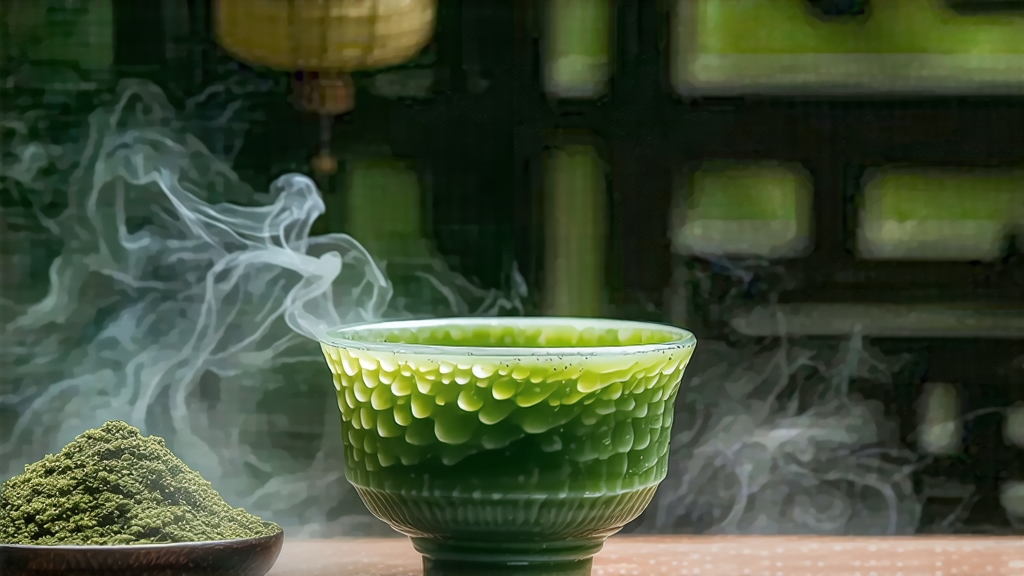
Walk into any serious tea house from Taipei to Toronto and you will almost certainly hear the name “Tie Guan Yin” pronounced with a hush of reverence. Literally “Iron Goddess of Mercy,” this oolong is both a place and a poem, a taste and a tale. Its leaves look like tiny green-black pearls, yet they unfurl into whole spring mornings, releasing an aroma that Chinese poets once described as “the breath of a hidden orchid.” To understand Tie Guan Yin is to step into four centuries of craft, crisis, and rebirth, and to discover why one tea can embody the entire philosophy of Chinese oolong.
Origin stories swirl like mountain mist. The most repeated begins in the impoverished village of Xiping in Anxi county, Fujian, during the Yongzheng reign (1723-1735). A devout farmer named Wei Yin daily cleaned a neglected stone shrine to Guan Yin, the Bodhisattva of Compassion. One night in a dream the goddess led him to a cave behind his fields where a single tea shrub glimmered like iron. He planted the cutting in his garden, processed the leaves with utmost care, and found the liquor so fragrant that it revived the weary and consoled the grieving. Villagers called the tea “Tie Guan Yin” to honor the miracle. A second, more prosaic version credits the Wang family of nearby Songyan village who developed the cultivar through selective breeding and charcoal baking. DNA fingerprinting at Fujian Agriculture University shows that all authentic Tie Guan Yin bushes descend from a single mother plant found in Xiping, so myth and science oddly agree.
Anxi County, wedged between the Wuyi and Daiyun ranges, offers the perfect terroir: granite soil, subtropical humidity, 1600 mm of annual rainfall, and the famous “three rains” of spring that arrive exactly when the tea bushes need them. Elevation ranges from 200 m to 1000 m; the higher the garden, the slower the leaf grows, the tighter the cell walls, and the more complex the aromatics. Morning fog diffuses sunlight, encouraging the synthesis of floral volatiles such as linalool and geraniol. Night temperatures drop sharply, locking sugars inside the leaf and setting the stage for the signature “yin yun”—a cooling, menthol-like finish that lingers like temple bells.
Although Tie Guan Yin is a single cultivar (Camellia sinensis var. sinensis ‘Tie Guan Yin’), market realities have splintered it into stylistic families that confuse even seasoned drinkers. The five most common are:
- Qing Xiang (Fresh Aroma): Modern, lightly oxidized (12-18 %) and barely roasted. The liquor is spring-grass green with a pronounced lily-and-cream note.
- Nong Xiang (Rich Aroma): Traditional, 25-30 % oxidation followed by medium charcoal roasting. Color turns golden-amber; flavor evokes honey, toasted almond, and orchid.
- Chen Xiang (Aged Aroma): Repeated roastings every two years for at least five years. The leaf darkens to mahogany, the cup tastes of dried jujube, sandalwood, and dark cocoa.
- Zheng Wei (Original Taste): A middle path—moderate oxidation, light charcoal finish—aiming to recreate the pre-1990s profile before the craze for green oolongs.
- Yin Yun (Silver Rhythm): A boutique micro-style from 800 m gardens, with 36-hour slow withering and single-clump processing; it displays a silvery liquor and a ringing mineral finish.
Each style begins with the same plucking standard: one bud and two or three adjacent leaves when the top leaf reaches the size of a sparrow’s tongue, usually around late April. Picking starts at dawn when dew still weighs the leaf; the picker’s fingernails must snap the stem cleanly to avoid bruising and premature oxidation. By 9 a.m. bamboo baskets arrive at the village factory, where the real choreography begins.
Withering is the first act. Leaves are spread on bamboo sieves set under shade cloth; fans move humid mountain air across them for 30-60 minutes, reducing moisture by about 5 %. The goal is to soften the cell walls so that later rolling will not shred the leaf. Next comes yao qing—“shaking fragrance”—the signature Anxi technique. Forty kilograms of leaves are tossed inside a cylindrical bamboo drum that rotates 15 times per minute. The gentle bruising